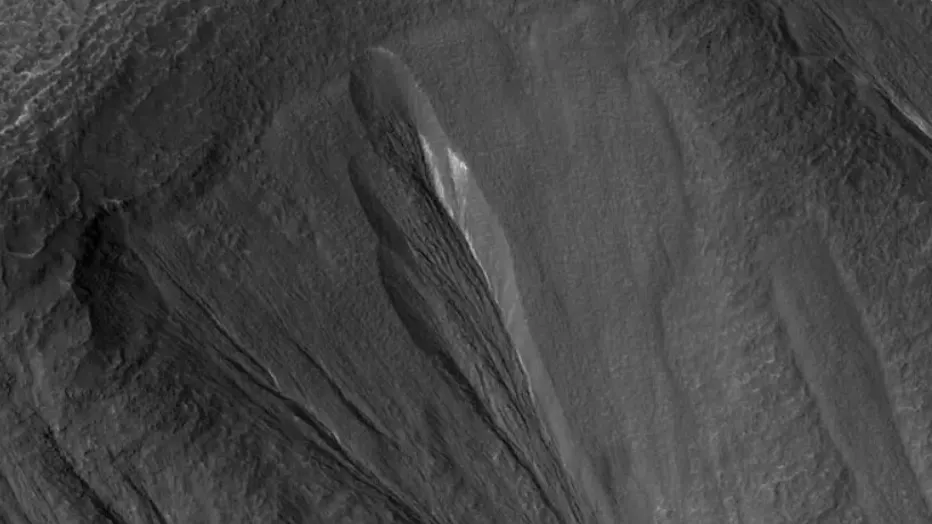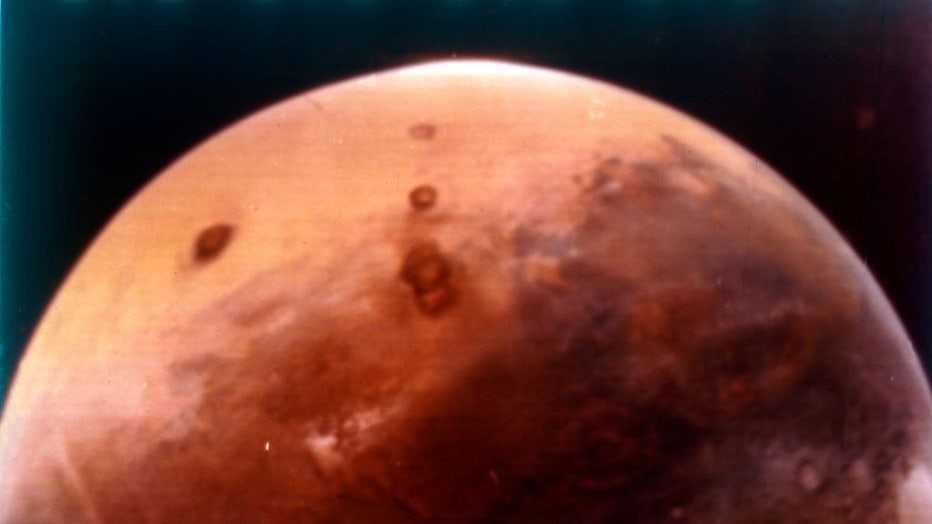Microbial life may exist in Martian frozen water pools, study finds
Although evidence of life on Mars hasn’t yet been discovered during any of NASA's robotic missions, scientists believe it could be a different story in small pools of water under the surface.
A new study by NASA scientists published in the journal Nature Communications Earth & Environment indicates that dusty ice allows just enough sunlight for photosynthesis to occur as deep as 9 feet below the surface.
Lacking a protective ozone shield, the Martian surface faces a barrage of solar radiation even below the surface, about 30% more damaging radiation compared to Earth. However, the new study highlights areas on Mars with potentially less radiation exposure and conditions where life could exist.

The white material seen within this Martian gully is believed to be dusty water ice. Scientists believe this kind of ice could be an excellent place to look for microbial life on Mars today. This image shows part of a region called Dao Vallis. (NASA/
According to the study authors, layers of water ice formed over the past few million years with snow and dust on the surface. Within these areas, scientists believe melting ice below the surface could hold small amounts of liquid water and be the best candidate for life on Mars.
"If we’re trying to find life anywhere in the universe today, Martian ice exposures are probably one of the most accessible places we should be looking," said study author Aditya Khuller of NASA’s Jet Propulsion Laboratory.
The photo below of a Martian gully shows the white material believed to be dusty water ice. Scientists say water ice is most likely to form from subsurface pools between 30 and 60 degrees latitudes in the Martian northern and southern hemispheres.

The Planet Mars. Artist NASA. (Photo by Heritage Space/Heritage Images/Getty Images)
Similar pools of water on Earth have been found teeming with life such as fungi, algae and microscopic bacteria, which derive energy from photosynthesis.
The team created models based on glacier ice found on Earth, including the Greenland Ice Sheet, to show how much sunlight the ice, snow and dust could absorb and how deep solar radiation could reach.
Scientists are mapping out areas on Mars that are likely to host meltwater spots using NASA spacecraft imagery. According to the space agency, these areas could be candidates for possible human and robotic missions.
Read more of this story from FOX Weather.

